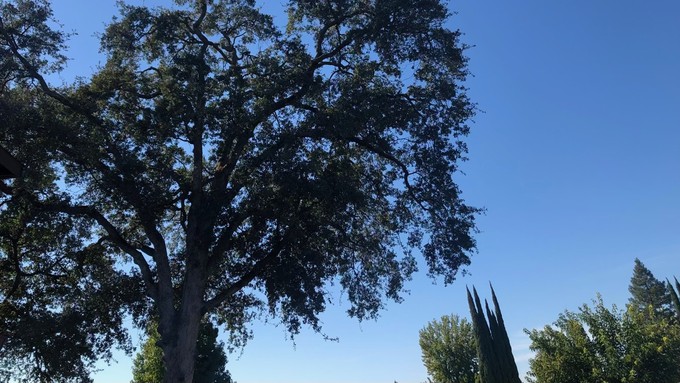
Placer master gardeners present free in-person session

Trees in neighborhoods and other urban areas take many forms and require different levels of care. The Urban Forestry workshop on Saturday focuses on the best practices for growing urban trees. Kathy Morrison
Collectively, humans get urban trees all wrong. They plant them too close to houses, or in tiny strips next to concrete, or tied forever to nursery stakes. They want tall trees instantly, for shade, not realizing that fast-growing trees also can be brittle. They complain about leaf litter. Or bird droppings from the local wildlife that nest there. Or that an older tree is now “blocking the view” and cut it down. Sheesh.
Among other benefits, trees naturally capture and lock up carbon dioxide through photosynthesis, but they're also victims of climate change-caused heat, wildfires and drought. Recent amendments to California’s Urban Forestry Act (which became law in 1978) aim to increase the tree canopy in the state. California also recently was granted nearly $102 million by the federal government to combat extreme heat and climate change, plant and maintain trees, and create urban green spaces.
It's no wonder the UCCE master gardeners of Placer County have dedicated this month’s free public workshop to trees. Their Urban Forestry workshop is scheduled for 10:30 to 11:30 a.m. this Saturday, Oct. 14, at the Loomis Library, 6050 Library Drive, Loomis.
“We will explore how gardeners can make this goal (of increasing the tree canopy) a reality," the master gardeners note. "Tree cover is vital in the built environment for shade, habitat, air quality and general well-being. We can have trees and eat our cake too!”
For other workshops and events on the Placer master gardeners' calendar this fall, go to https://pcmg.ucanr.edu/
The former lawn at Loomis Library, incidentally, is soon to be the site of the Placer master gardeners' demonstration garden. Work is already in progress -- check it out when attending the workshop.
Comments
0 comments have been posted.Sacramento Digs Gardening to your inbox.
Sites We Like
Garden Checklist for week of May 12
Get your gardening chores and irrigation done early in the day before temperatures rise.
* Plant, plant, plant! It’s prime planting season in the Sacramento area. Time to set out those tomato transplants along with peppers and eggplants. Pinch off any flowers on new transplants to make them concentrate on establishing roots instead of setting premature fruit.
* Direct-seed melons, cucumbers, summer squash, corn, radishes, pumpkins and annual herbs such as basil.
* Harvest cabbage, lettuce, peas and green onions. This heat will cause leafy greens and onions to flower; pick them before they bolt.
* In the flower garden, direct-seed sunflowers, cosmos, salvia, zinnias, marigolds, celosia and asters.
* Plant dahlia tubers. Other perennials to set out include verbena, coreopsis, coneflower and astilbe.
* Transplant petunias, marigolds and perennial flowers such as astilbe, columbine, coneflowers, coreopsis, dahlias, rudbeckia and verbena.
* Keep an eye out for slugs, snails, earwigs and aphids that want to dine on tender new growth.
* Feed summer bloomers with a balanced fertilizer.
* For continued bloom, cut off spent flowers on roses as well as other flowering plants.
* Got fruit trees? If you haven't already done so, thin orchard fruit such as apples, peaches, pears, pluots and plums before they grow too heavy, breaking branches or even splitting the tree. Leave the largest fruit on the branch, culling the smaller ones, and allow for 5 to 6 inches (or a hand's worth) between each fruit.
* Thin grape bunches, again leaving about 6 inches between them. For the remaining bunches, prune off the "tail" end, about the bottom third of the bunch, so that the plant's energy is concentrated in the fruit closest to the branch.
* As spring-flowering shrubs finish blooming, give them a little pruning to shape them, removing old and dead wood. Lightly trim azaleas, fuchsias and marguerites for bushier plants.
* Add mulch to the garden to help keep that precious water from evaporating. Mulch also cuts down on weeds. But don’t let it mound around the stems or trunks of trees or shrubs. Leave about a 6-inch to 1-foot circle to avoid crown rot or other problems.